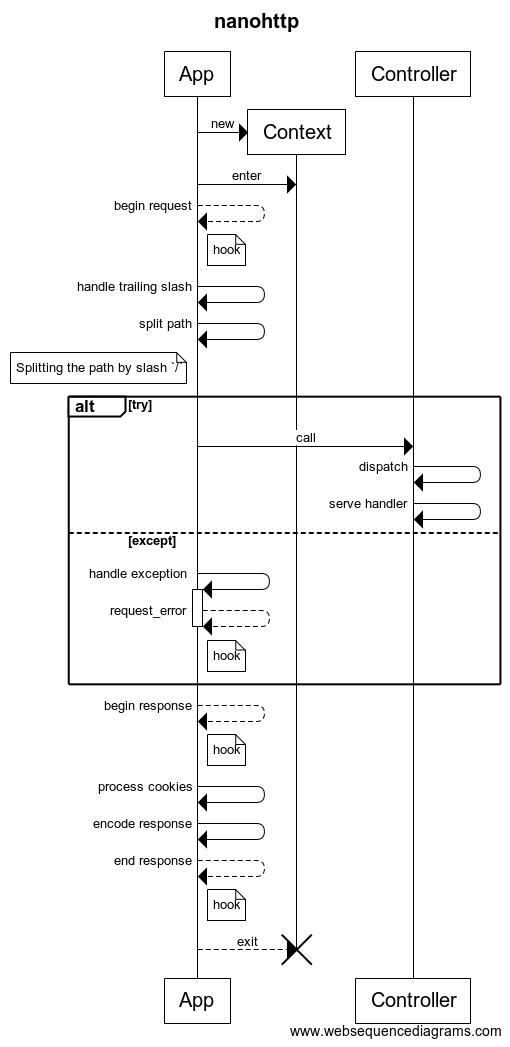Application¶
Everything in nanohttp start from an application. You should define your root controller in application. for more information and samples see WSGI.
Life cycle¶

Hooks¶
Hooks is part of your application life-cycle and calling when they are need.
A few hooks are available:
app_init: After application initialized.begin_request: Before start to processing request.begin_response: After processing request and preparing the response.end_response: Response is ready to send to client.
from nanohttp import Application, Controller, context
class JwtApplication(Application):
token_key = 'HTTP_AUTHORIZATION'
refresh_token_cookie_key = 'refresh-token'
def begin_request(self):
if self.token_key in context.environ:
encoded_token = context.environ[self.token_key]
try:
context.identity = JwtPrincipal.decode(encoded_token)
except itsdangerous.SignatureExpired as ex:
refresh_token_encoded = context.cookies.get(self.refresh_token_cookie_key)
if refresh_token_encoded:
# Extracting session_id
session_id = ex.payload.get('sessionId')
if session_id:
context.identity = new_token = self.refresh_jwt_token(refresh_token_encoded, session_id)
if new_token:
context.response_headers.add_header('X-New-JWT-Token', new_token.encode().decode())
except itsdangerous.BadData:
pass
if not hasattr(context, 'identity'):
context.identity = None
Note
[Pro-tip] in some cases, you can override
Application._handle_exception to handle exception for all
requests.